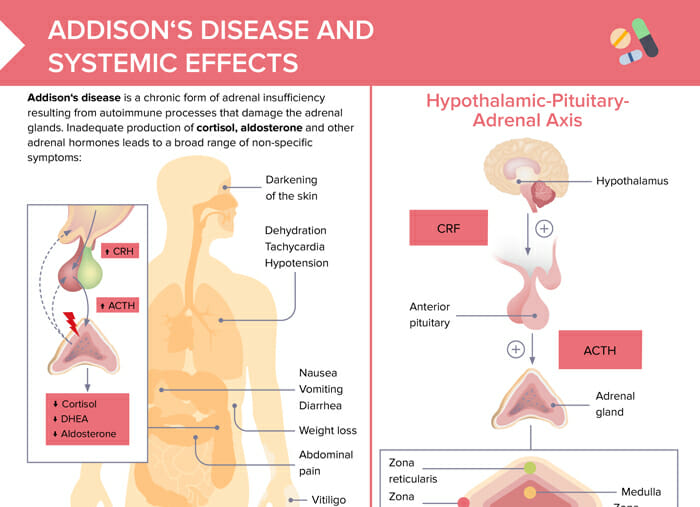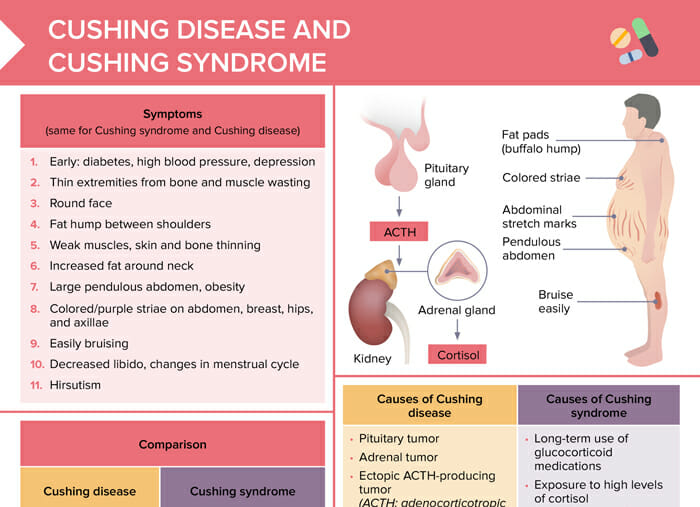What is Cushing syndrome?
Cushing syndrome (also called hypercortisolism) is a disorder caused by high levels of the stress hormone cortisol in the blood. It has a variety of physical and mental symptoms.
It can be caused by exogenous (outside the body) or endogenous (inside the body) factors.
What is Cushing disease?
Cushing disease occurs when Cushing syndrome is caused by an ACTH-producing pituitary tumor, meaning it has a specific endogenous cause.
Cushing disease is a rare condition that affects 10–15 people per million a year, most often between the ages of 20 and 50. It is more common in women than men.
Cushing disease vs syndrome causes: comparison
Table: Comparison of causes of Cushing disease and Cushing syndrome
| Cushing disease | Cushing syndrome | |
| Causes | Tumor (pituitary, adrenal, ectopic ACTH-producing tumor) | Long-term use of glucocorticoid medications; exposure to high levels of cortisol |
What are the symptoms of Cushing syndrome and Cushing disease?
Cushing syndrome and Cushing disease present with the same set of symptoms:
- Early: diabetes, high blood pressure, depression
- Thin extremities from bone and muscle wasting
- Round face
- Fat hump between shoulders
- Weak muscles, skin and bone thinning
- Increased fat around neck
- Large pendulous abdomen, obesity
- Colored/purple striae on abdomen, breast, hips, and axillae
- Easy bruising
- Decreased libido, changes in menstrual cycle
- Hirsutism
Diagnosis of Cushing syndrome and Cushing disease
Diagnosis of Cushing syndrome and Cushing disease includes a thorough medical history, an in-depth physical exam, and the following laboratory tests:
- 24-hour urinary free cortisol
- Late-night salivary cortisol
- Low/high-dose dexamethasone test
What are normal cortisol levels?
Normal levels for a blood cortisol test are usually 6–23 mcg/dL, but the reference range can slightly vary depending on the lab and the time of day when the test was done as cortisol levels naturally fluctuate throughout the day.
Treatment of Cushing syndrome and Cushing disease
Treatment of high cortisol levels in Cushing syndrome and Cushing disease includes:
- Lowering glucocorticoid dose (taper to avoid adrenal crisis!)
- Switching medication to another anti-inflammatory type
- Surgical removal of tumor if indicated in Cushing disease

